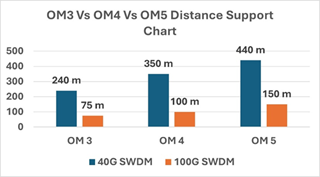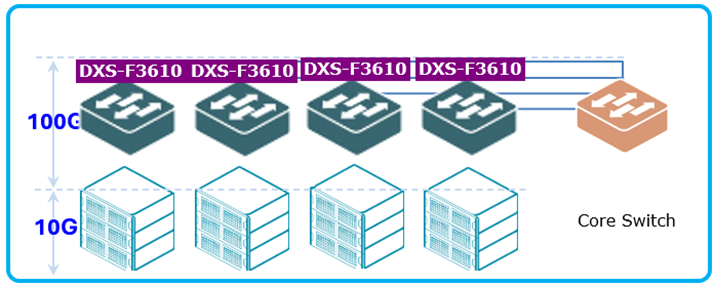Cutting-edge & Resilient Data Center Solutions
by Ruturaj Mohapatra, Solution Consulting
March 26, 2024
In today’s digital age, data centers serve as the backbone of countless industries, powering storage, processing, and delivery of vast amounts of information. From cloud computing to online transactions, these facilities play a pivotal role in keeping our interconnected world running smoothly. As the demand for data continues to surge, businesses are faced with the challenge of optimizing their data center operations, while maintaining efficiency and reliability. This is where innovative data center solutions come into play.
Data center solutions encompass a wide range of technologies and strategies designed to enhance the performance, scalability, and resilience of data center infrastructure. In an increasingly data-driven world, the importance of effective data center solutions cannot be understated. By harnessing the power of innovation and technology, businesses can unlock new levels of efficiency, reliability, and scalability, enabling them to thrive in today’s dynamic digital landscape.
Investing in data center solutions is essential for staying competitive and meeting the evolving demands of the modern marketplace. D-Link is here to enable businesses to harness the power of data center technology, as they march towards success.
 |
Optimizing Data Center Performance with D-Link OM3, OM4, and OM5 Fiber : D-Link OM3 Fiber offers varied advantages in data centers with enhanced bandwidth and transmission speeds, seamless compatibility with existing fiber optic infrastructure, and is cost-effective in comparison to higher-grade fibers. These advantages translate into high-speed data transmission for server connectivity, efficient support for storage area networks (SANs) and network attached storage (NAS) systems, as well as seamless interconnection of switches, routers, and other networking equipment within the datacenter. |
D-Link OM4 Fiber presents numerous advantages in data centers, such as heightened performance for data-intensive applications, robust support for emerging technologies like 40G and 100G Ethernet, and notable reductions in signal loss paired with improved signal quality. Thereby facilitating high-speed data transmission within cloud computing environments, efficient interconnection of high-performance computing clusters, and reliable backbone connectivity within large-scale data center architectures.
D-Link OM5 Fiber offers distinct advantages in data centers with its support for multiple wavelengths, which enables higher data rates and increased capacity. Additionally, its enhanced flexibility and scalability contributes to future-proofing data center infrastructure, while improved color-coding simplifies the identification and management of fiber connections. These advantages are beneficial for next-generation data center architectures that demand ultra-high-speed connectivity. OM5 Fiber solution supports emerging technologies like 400G and beyond and is apt for deployment in dense and highly virtualized environments.The surveillance camera industry is undergoing a technological revolution, with advancements making systems more efficient, effective, and versatile. However, as we adopt these technologies, it’s crucial to address privacy and ethical considerations to ensure that surveillance practices respect individual rights. By balancing innovation with responsibility, we can harness the full potential of surveillance technology to foster safer and more secure environments.
Data Center Cabling Specifications:
- Comprehensive Infrastructure Solutions
- Redundancy Integrated into Design
- Main Distribution and Zone Distribution Copper Cabling Minimum Class Ea (Class E in European Standard)
- Main Distribution and Zone Distribution Fiber Cabling: Minimum OM4 & OM3, Class OF-300
- Fiber Connectivity: ENI – LC/APC (SM), LC/PC (MM)
- No Field Terminated Patch cords for Fiber or Copper
TIA 942 – Telecommunications Infrastructure Standard for Data Centers:
- TIA 942 is a globally recognized standard developed by the Telecommunications Industry Association (TIA) that specifies the minimum requirements for the design and implementation of telecommunications infrastructure in data centers.
- Predominantly focused on telecom infrastructure but includes substantial content related to facility requirements.
- Establishes a flexible and easily managed structured cabling system using standard media.
- These standard addresses various aspects of data center infrastructure, including cabling, network architecture, electrical systems, cooling, and security.
- Offers guidelines on various subjects beneficial for data center design and management.
- Officially defines tiering standards to assess a center’s quality objectively.
- TIA 942 provides guidelines to ensure the reliability, scalability, and efficiency of data center operations while promoting interoperability and adherence to industry best practices.
- Compliance with TIA 942 helps organizations build resilient and high-performing data center facilities that meet the demands of modern IT environments.
D-Link Top-of-Rack and Leaf-Spine Switching Solutions for Data Center:
Leaf-Spine Topology

TOR Topology

D-Link TOR switches in data centers support reduced cabling complexity and improved cable management. If offers enhanced network flexibility and agility for rapid deployment and scaling, as well as lower latency and improved performance for east-west traffic within the data center. When selecting TOR switches, considerations such as port speed, forwarding capacity, and support for virtualization technologies are crucial, along with ensuring interoperability with existing networking infrastructure and compatibility with emerging standards.
Optimizing data center network with TOR switches involves architectural considerations like incorporating TOR switches into designs with spine-leaf architectures and fabric-based networking, alongside strategies for achieving high availability and redundancy.
TOR switches play critical roles in cloud computing environments for connecting servers and facilitating resource pooling and virtualization. Further it supports multi-tenant environments and network isolation. They also facilitate high-speed, low-latency networking for big data processing, and analytics workloads in high-performance computing (HPC) clusters for interconnecting compute nodes supporting scientific and engineering applications.